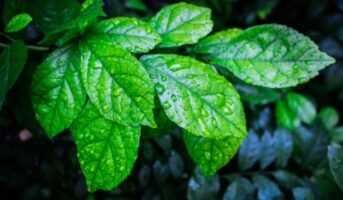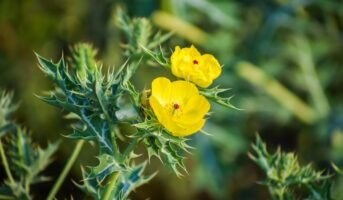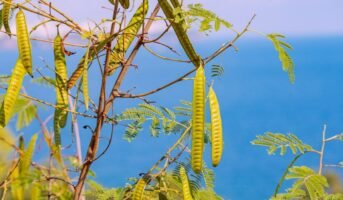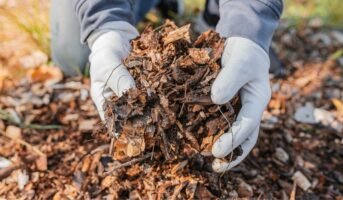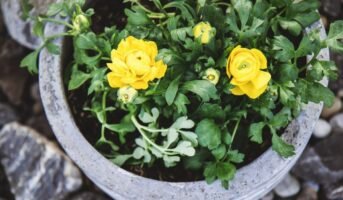The Colocasia Esculenta, commonly known as the Elephant Ear Plant or Aalukee in Hindi, is a tropical, perennial plant known for its oversized leaves. The term Elephant Ear is the common name for several plants belonging to the Araceae family, which look strikingly similar to each other, the most popular genera being the Colocasia, Alocasia, and Xanthosoma. Out of these, Colocasia is the most common species.
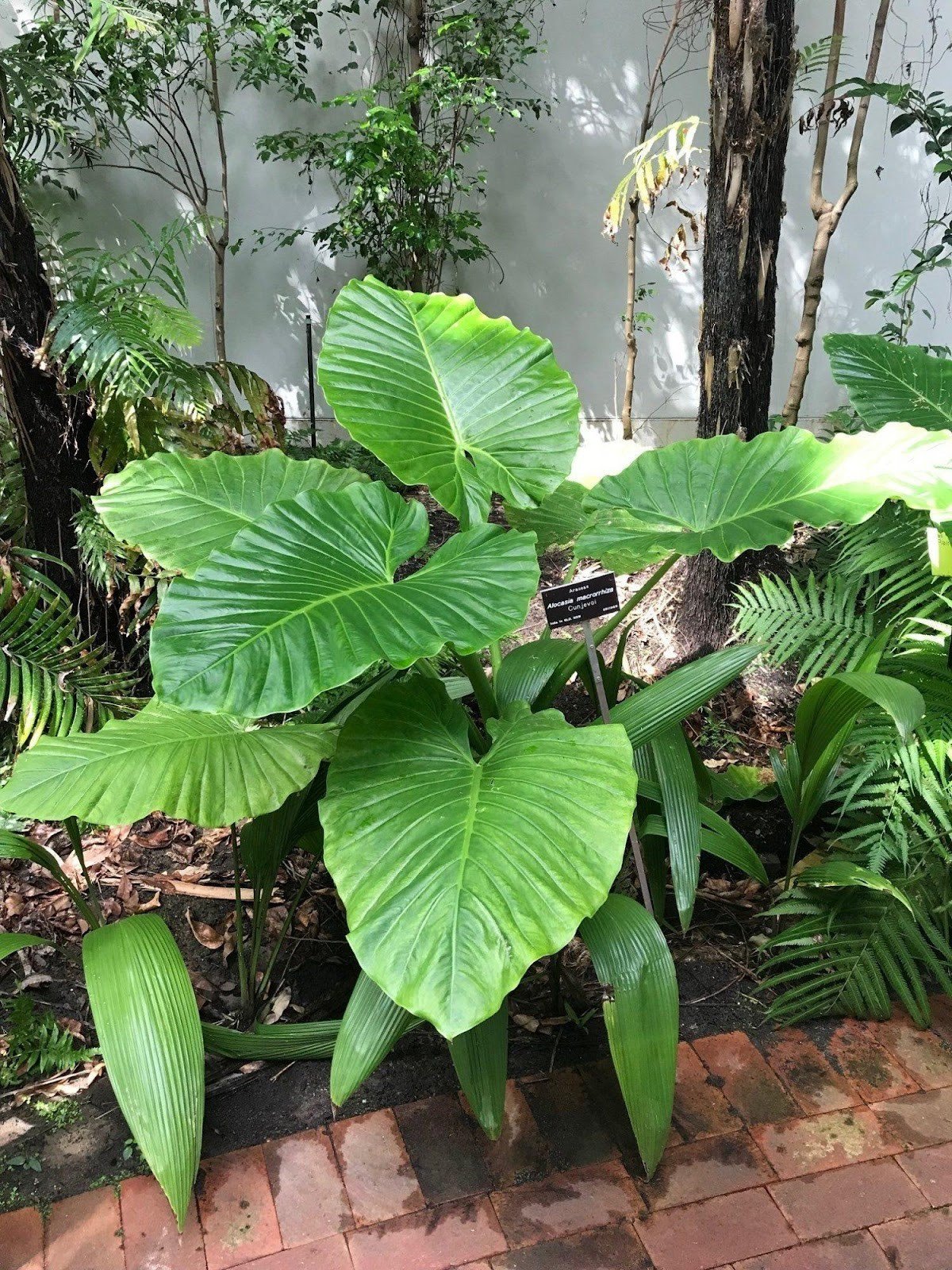
Source: Pinterest
Colocasia: Key facts
| Common name | Elephant ear, Colocasia, taro |
| Scientific name | Colocasia esculenta |
| Family | Araceae |
| Plant type | Tropical perennial |
| Mature size | 3-6 ft. tall, 3-6 ft wide, smaller in colder climates |
| Sun exposure | Partial to full sun exposure needed |
| Soil type | Moist |
| Soil pH | Acidic (pH 5.5-7) |
| Bloom time | Rarely bears flowers |
| Flower colour | Yellowish-white |
| Nativity | Asia, Australia, America |
| Toxicity | Toxic to humans and domestic animals |
Colocasia: Physical description
Native to Asia, Australia, and parts of central and southern America, the Colocasia plant is known for its speedy growth rate and is known for its high heat tolerance. They can grow up to be anywhere from three to six feet. Elephant ears are high-maintenance plants that grow huge heart-shaped leaves that are most suitable for tropical or water, or bog gardens.
One exception is the Colocasia esculenta, also known as the wild colocasia, which has its origins in Africa but is believed to be listed as an invasive species in California, Florida, Georgia, Alabama, and South Carolina. They bear greenish flowers and berry-like fruits with a lot of seeds.
When and where to plant Elephant Ear plant?
Growing
The Elephant Ear plant needs fertile soil that is loamy, humid and slightly acidic. Grow it in partial shade for best results, and put it in a place with plenty of humidity. These plants are originally accustomed to an abundance of water. Some varieties are even suitable for growing in larger containers. Either way, these plants are a lovely addition to any tropical-themed backdrop.
Sprinkle the colocasia seeds on top of a seed starting mix and top it off with some more seed starting mix. Keep the mix damp and moist but not soggy. Seedlings will start to appear between 3-8 weeks. Keep the potting tray in indirect light that is not too bright.
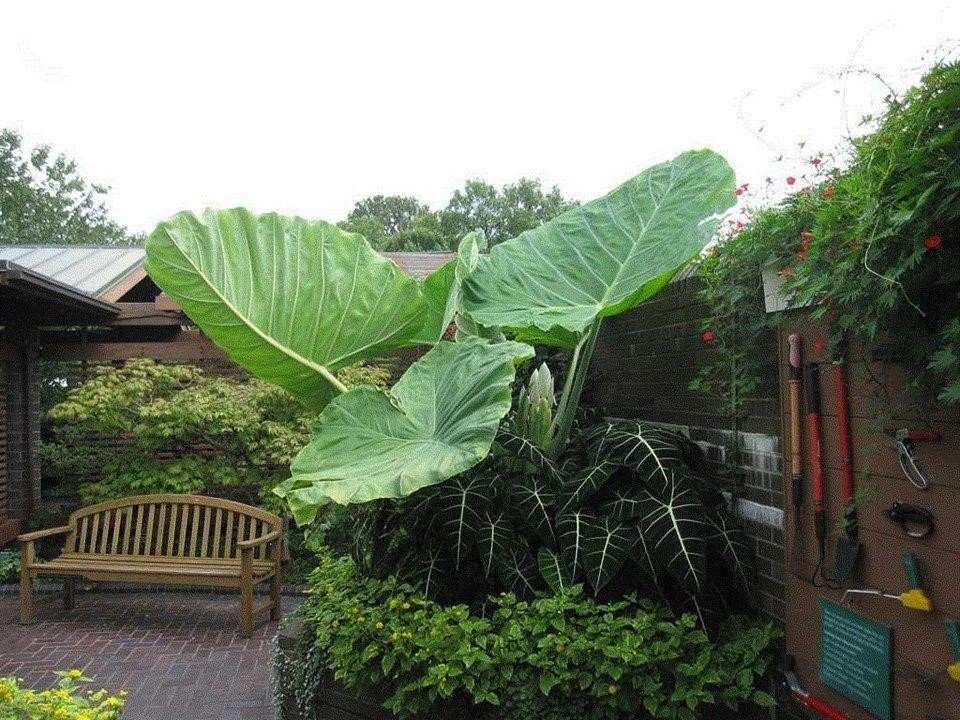
Source: Pinterest
Plant them in moderately warm soil. Depending on the species, the colocasia plant may grow from tuberous roots (Colocasia) or a corm (Alocasia and Xanthosoma), which is a hard, swollen structure. Once it has sprouted, the elephant ear plant needs a little bit of looking after and tending. Regularly feed it fertilisers high in nitrogen, and be sure to water it regularly, especially in hotter weather.
Plant the Colocasia in partial to full sun, preferably in part with partial shade and ample sunlight at different times of the day. For cultivars with greener, darker leaves, give them more sun to maintain their colour.
Give the Aalukee plant soil plenty of moisture, so much moisture that it is almost wet (emphasis on almost). Plant it in a sheltered spot with plenty of moisture outside and bring it indoors when autumn nears. Ideally recommended for boggy areas, swamps and marshes, this plant thrives in the abundance of water.
It can even survive when planted in up to 6 inches of water but does best when planted in soil that is moist but not soggy. Make sure the soil never goes dry. As a rule of thumb, water until the top of the soil feels moist.
The Aalukee plant flourishes when placed in humid places. The best is a USDA zone 10 or slightly warmer. It is likely to die to the ground in zones 9 or 8 but will come back to life in the spring, given it has been taken care of throughout. In winter, dig up the roots, tubers or corms of the plant and store them indoors to prevent them from dying.
When it comes to propagation, which a lot of tropical plant lovers do, the most efficient way to propagate an Aalukee plant is by division at the root node near the end of the growing season in the fall.
As for potting and repotting, use a potting mix that helps hold moisture. Use large-sized pots and repot every 2-3 months or whenever the plant roots begin growing out. Use perlite to help aerate the soil.
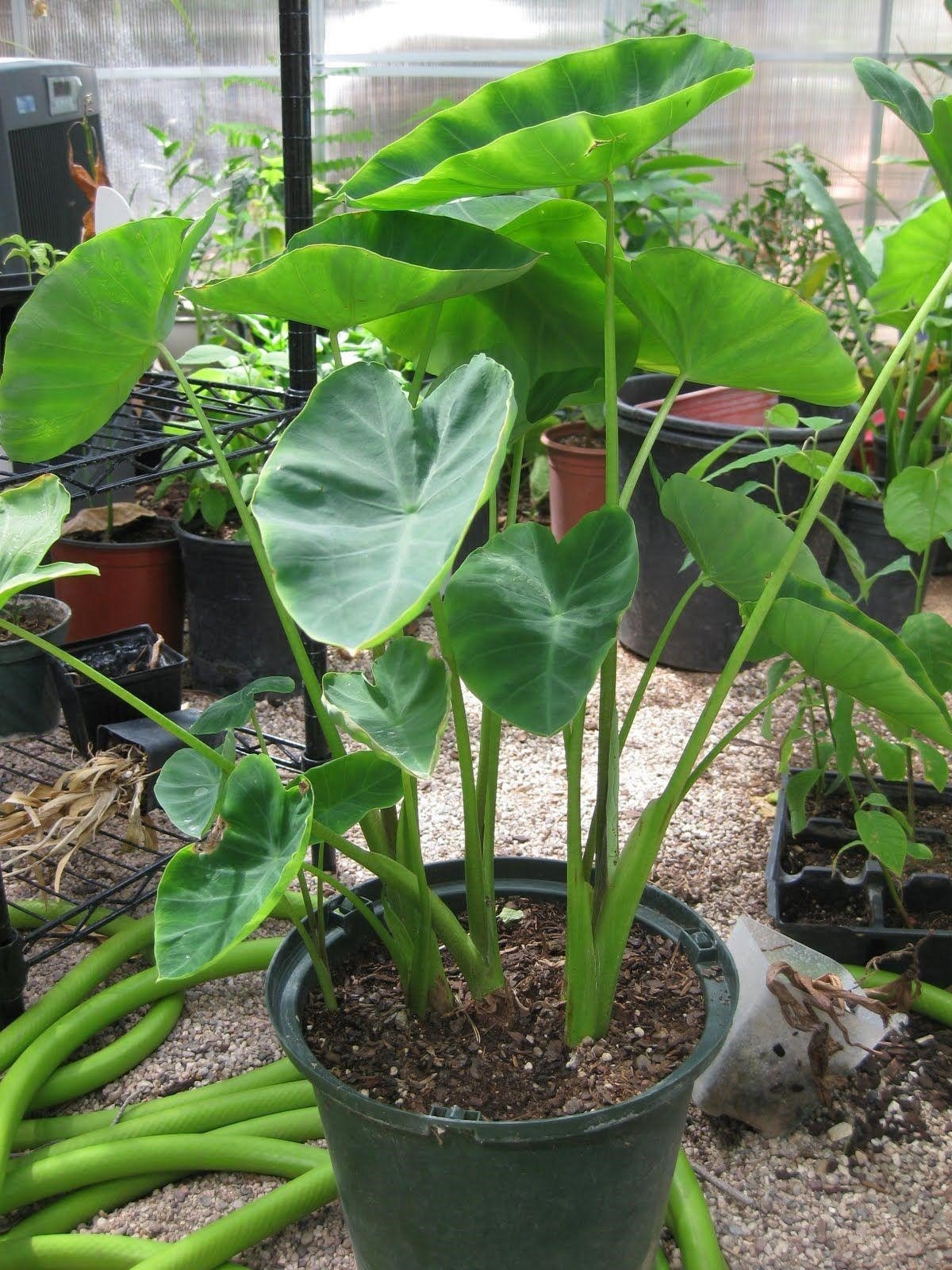
Source: Pinterest
How to care for Elephant Ears Plant?
As you can presume from the type of plant the colocasia is, it is a heavy fertiliser feeder. Apply water-soluble fertilisers rich in nitrogen every two to three weeks.
Pruning is vital for the Aalukee plant and is an important step in maintaining the plant. As the plant grows enormous leaves, prune them as soon as they die to keep the plant healthy and fresh.
After the first frost, the plant is most likely half dead. Cut back the elephant ear plant 2-3 days after the first killing frost, as soon as the foliage turns brown. Remember to sterilise the pruning shears and make sure you wear gloves, and snip off the leaves near the base of the plant, two inches above the ground. Make sure to cut cleanly and not to rip or tear, as it can severely damage the plant.
Pest and plant diseases
The Aalukee plant, being a tropical plant, is prone to catching and attracting a lot of diseases and pests over its lifetime. The most common are fungal leaf blight, phyllosticta, pythium rot, and even pests like spider mites.
For fungal leaf blight and phyllosticta, use a copper-based fungicide and irrigate the soil instead of watering the plant for the time being.
For treating pythium rot, remove the entire plant and replace the soil and sterilise the container or pot it was previously growing in. Use insecticidal soap or horticultural oil for spider mites.
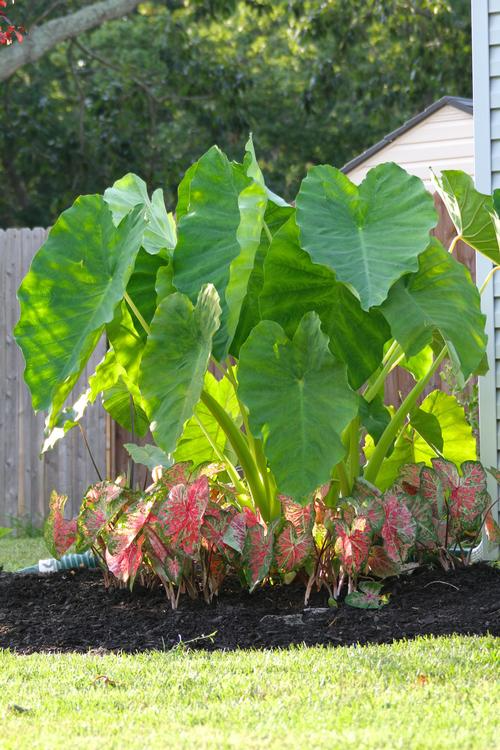
Source: Pinterest
Colocasia: Uses
The Colocasia plant is consumed in many parts of the world. They are consumed by boiling, frying, baking etc, in a similar manner to potatoes. They can also be grated to make flour out of and to be used in soups and curries. Corm can be toxic at times, so cook it thoroughly before consumption.
There are a few species of the Colocasia plant that are consumed as a delicacy in certain parts of the world. These species, namely taro, eddoe and dasheen, are grown in the south pacific and their leaves are often boiled with coconut milk to make a soup. The stems of the taro plant are also boiled and mashed into a paste, then used as an ingredient in Poi, a Hawaiian dish.
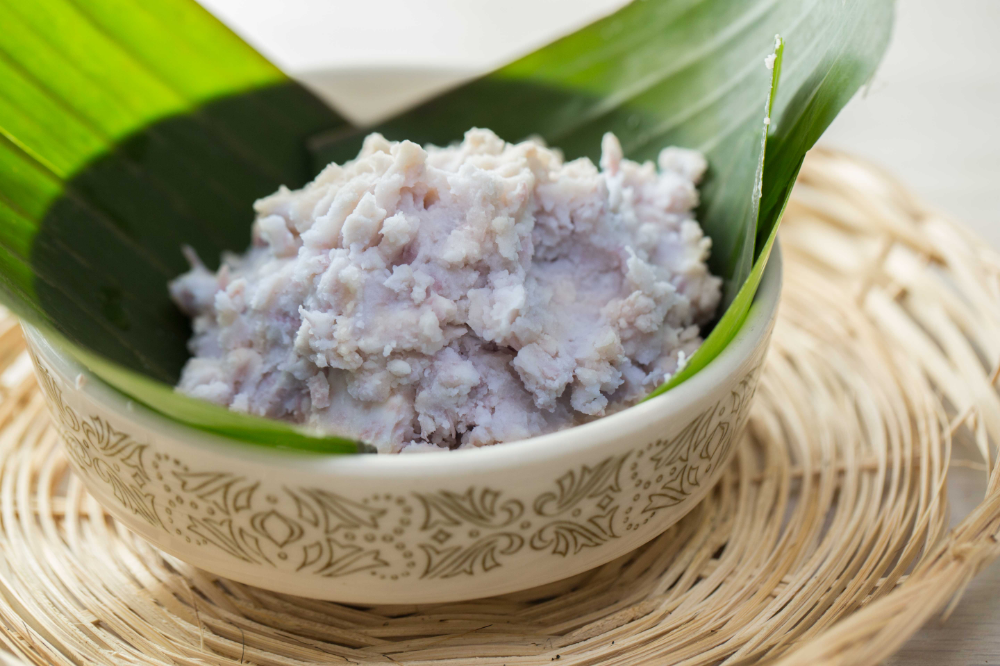
Source: Pinterest
Medicinal uses include consumption of the leaves’ juices to promote menstruation, relieve stomach issues and also treat cysts. In New Guinea, it is also made into a poultice and used to treat boils. Sap from the leaves is also used in treatment of conjunctivitis and also to treat wounds.
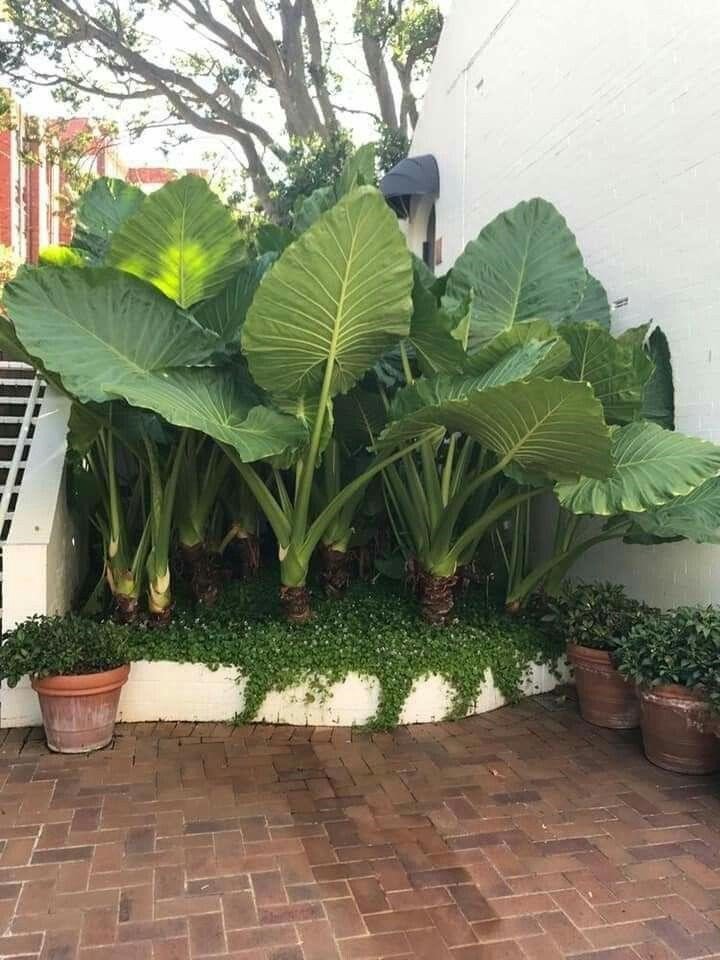
Source: Pinterest
FAQs
My Colocasia plant leaves have started yellowing. Why is it so?
If your Colocasia begins to yellow, it might be because it is either getting too much sunlight or too little sunlight. It can also mean the plant is going dormant for the season. Cut back the yellow leaves and wait until next spring.
My Colocasia leaves have been drooping. Why?
Aalukee leaves can droop if light, fertiliser or water levels are off. Another reason may be the massive size of the leaves, which can cause them to droop low because of their weight. You can put in stakes for the leaves to rest on.
The elephant ear plant species has been known to be toxic to humans. Are there any alternatives that look similar?
The elephant ear plant is known to be toxic and invasive as well, depending on the location. A considerable alternative to it can be the banana plant. The banana plant has a similar lush, tropical look that takes even less effort to grow and is non-toxic as well.
Housing News Desk is the news desk of leading online real estate portal, Housing.com. Housing News Desk focuses on a variety of topics such as real estate laws, taxes, current news, property trends, home loans, rentals, décor, green homes, home improvement, etc. The main objective of the news desk, is to cover the real estate sector from the perspective of providing information that is useful to the end-user.
Facebook: https://www.facebook.com/housing.com/
Twitter: https://twitter.com/Housing
Email: [email protected]

